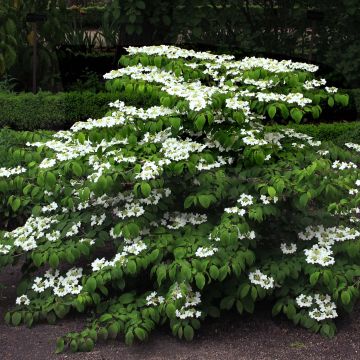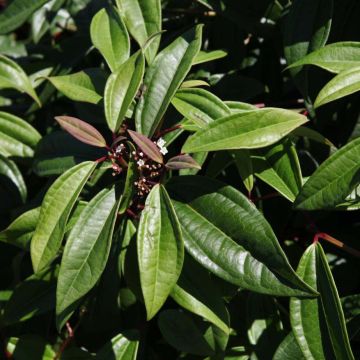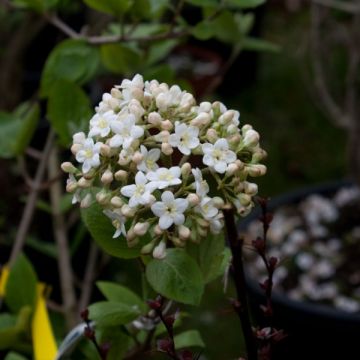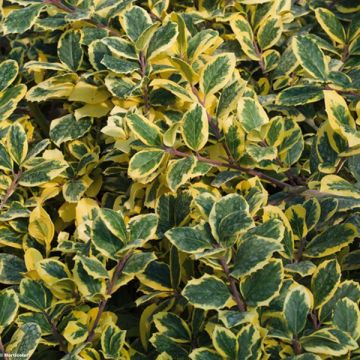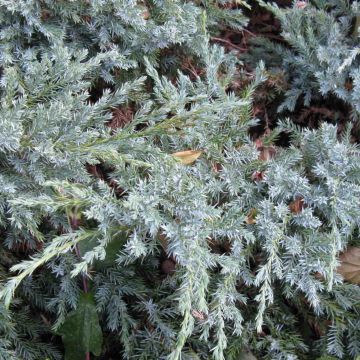

Viburnum tinus Lisarose - Laurustinus
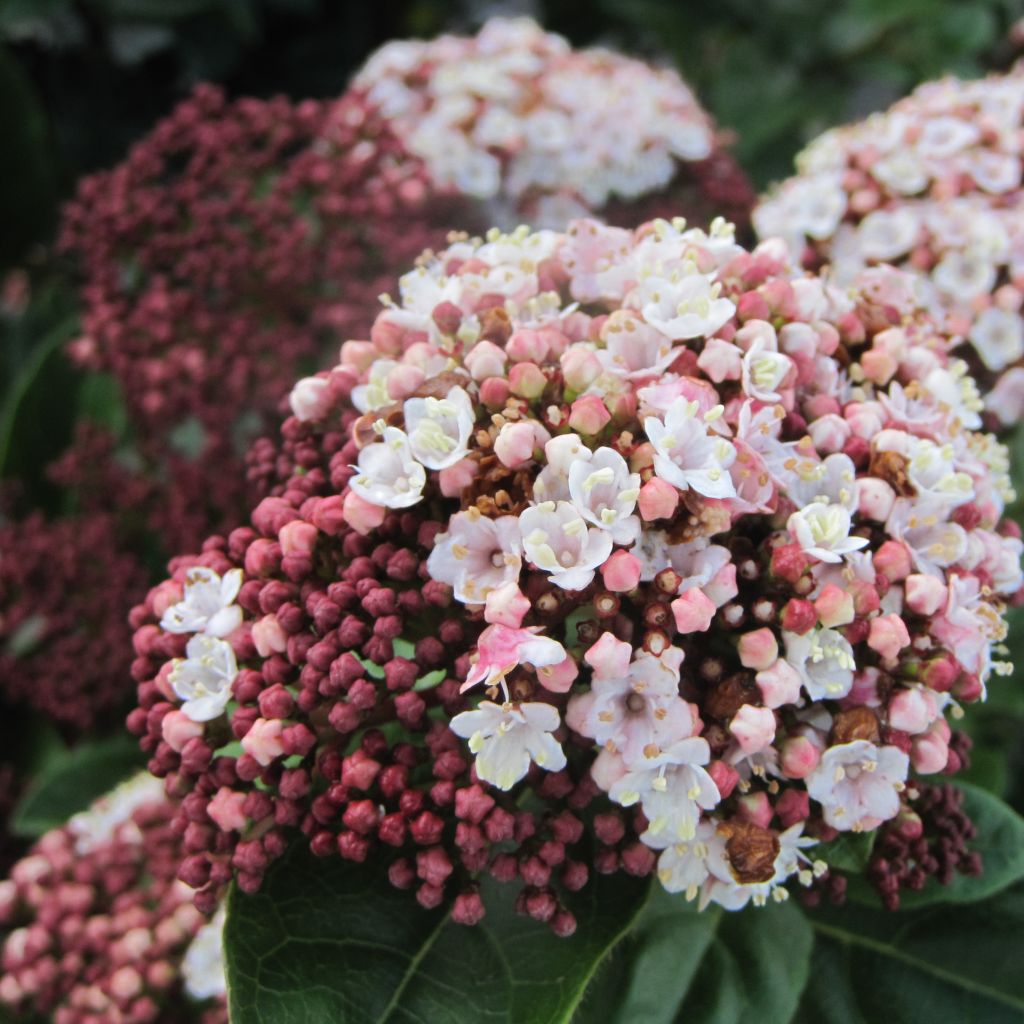

Viburnum tinus Lisarose - Laurustinus


Viburnum tinus Lisarose - Laurustinus
Viburnum tinus Lisarose - Laurustinus
Viburnum tinus Lisarose
Laurustinus
This item cannot be shipped to the selected country
Delivery charge from €5.90
Delivery charge from €5.90
More information
Schedule delivery date,
and select date in basket
This plant carries a 24 months recovery warranty
More information
We guarantee the quality of our plants for a full growing cycle, and will replace at our expense any plant that fails to recover under normal climatic and planting conditions.
From €5.90 for pickup delivery and €6.90 for home delivery
Express home delivery from €8.90.
From €5.90 for pickup delivery and €6.90 for home delivery
Express home delivery from €8.90.

Does this plant fit my garden?
Set up your Plantfit profile →
Description
Viburnum tinus 'Lisarose', also known as Laurustinus, is a recent cultivar. Despite its modest appearance, it provides a delightful flowering display of pinkish flower buds opening into light pink flowers, grouped in rounded terminal inflorescences. Its evergreen, dark and glossy foliage provides a beautiful setting for its winter flowering, which is particularly welcome when the whole garden is at rest. It is also a robust plant, easy to grow, tolerating poor and dry soils and the competition of old tree roots. It is essential in free hedges, majestic in the background of flower beds, and stunning in large pots where birds flock. It responds well to pruning, allowing its growth to be shaped according to its intended use.
Viburnum tinus 'Lisarose' belongs to the Caprifoliaceae family, which includes numerous species of Viburnums. It is a recent variety of Viburnum tinus, native to the Mediterranean basin. It is an evergreen shrub, with a dense and branched habit. At maturity, it will reach a height of 2 m (6.6 ft) and a width of 1.50 m (4.9 ft) if not pruned. Its foliage is dark and glossy, with a lighter matte appearance on the underside. The leaves are entire, ovate, pointed, and measure 5 to 10 cm (3.9 in) in length. The spring growth shoots are purplish, giving the plant a soft appearance. Flowering is a slow but steady process: pinkish buds, like cushions of pearls, appear grouped in flattened and rounded cymes among the foliage from October onwards, and if the winter is mild, they open gradually until February-March, heralding spring. Flowers are followed by the formation of clusters of small blue fruits that turn black when ripe, which birds delight in. This shrub has one small flaw, which is briefly noticeable after rain: its foliage emits an unpleasant odour that, fortunately, is quite short-lived.
Viburnum tinus 'Lisarose' is an excellent understory plant, where it thrives despite the dense shade of trees and the presence of their roots. It tolerates all well-drained to dry soils, naturally integrating into a free or neatly trimmed hedge, and is valuable for its winter flowering. It also makes a beautiful specimen when planted in a large pot on the terrace. It is a shrub well adapted to coastal areas and hot, dry summers: combine it with deciduous Viburnum x bodnantense, early-flowering Japanese kerria, Japanese quinces, and Chinese almonds, Viburnum lantana, and Viburnum davidii.
Report an error about the product description
Viburnum tinus Lisarose - Laurustinus in pictures
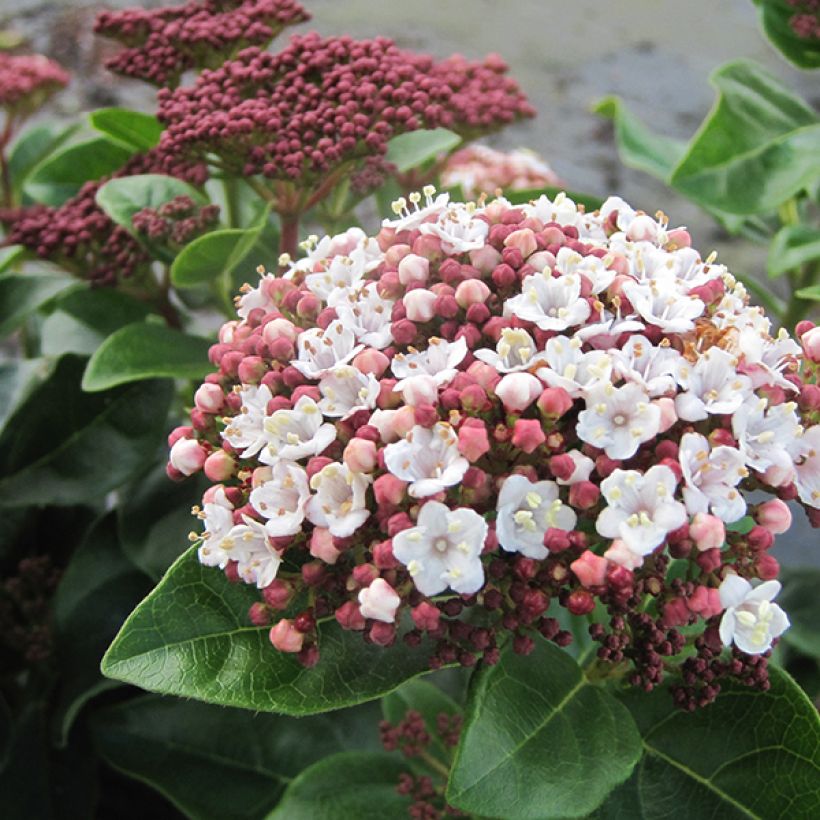

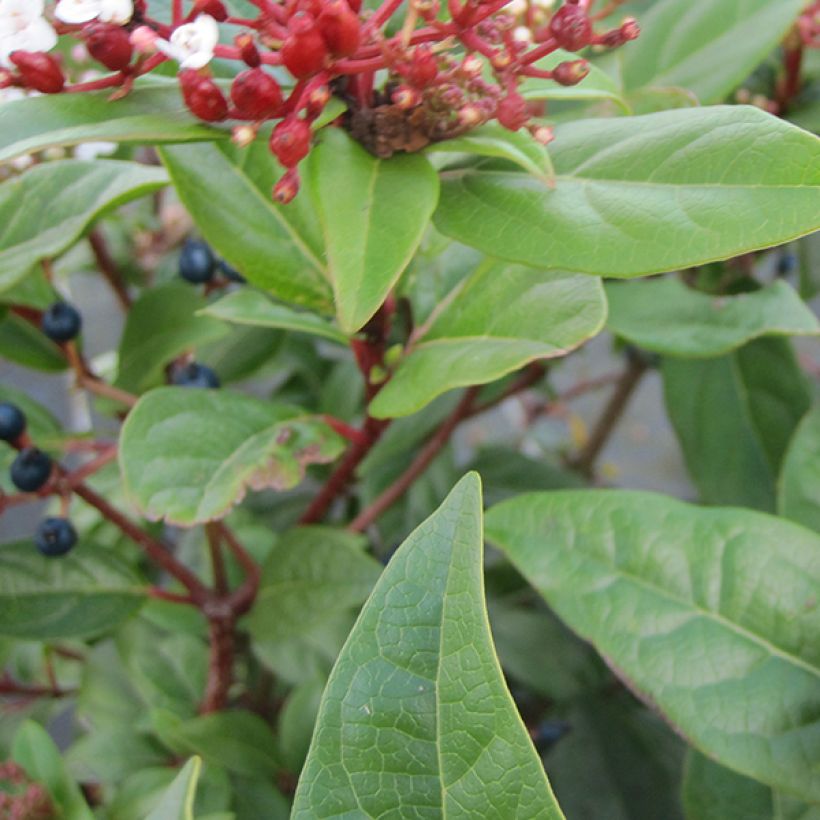



Plant habit
Flowering
Foliage
Botanical data
Viburnum
tinus
Lisarose
Caprifoliaceae
Laurustinus
Cultivar or hybrid
Other Viburnum
Planting and care
Viburnum tinus 'Lisarose' is not demanding when it comes to soil type, it tolerates limestone well. Plant it in regular garden soil, in a sheltered location if you live in an area where winters are harsh, as its hardiness can be compromised in heavy soil and severe frost. Prune, even severely, after flowering if desired. However, this task is not mandatory.
Planting period
Intended location
Care
-
, onOrder confirmed
Reply from on Promesse de fleurs
Evergreen shrubs
Haven't found what you were looking for?
Hardiness is the lowest winter temperature a plant can endure without suffering serious damage or even dying. However, hardiness is affected by location (a sheltered area, such as a patio), protection (winter cover) and soil type (hardiness is improved by well-drained soil).

Photo Sharing Terms & Conditions
In order to encourage gardeners to interact and share their experiences, Promesse de fleurs offers various media enabling content to be uploaded onto its Site - in particular via the ‘Photo sharing’ module.
The User agrees to refrain from:
- Posting any content that is illegal, prejudicial, insulting, racist, inciteful to hatred, revisionist, contrary to public decency, that infringes on privacy or on the privacy rights of third parties, in particular the publicity rights of persons and goods, intellectual property rights, or the right to privacy.
- Submitting content on behalf of a third party;
- Impersonate the identity of a third party and/or publish any personal information about a third party;
In general, the User undertakes to refrain from any unethical behaviour.
All Content (in particular text, comments, files, images, photos, videos, creative works, etc.), which may be subject to property or intellectual property rights, image or other private rights, shall remain the property of the User, subject to the limited rights granted by the terms of the licence granted by Promesse de fleurs as stated below. Users are at liberty to publish or not to publish such Content on the Site, notably via the ‘Photo Sharing’ facility, and accept that this Content shall be made public and freely accessible, notably on the Internet.
Users further acknowledge, undertake to have ,and guarantee that they hold all necessary rights and permissions to publish such material on the Site, in particular with regard to the legislation in force pertaining to any privacy, property, intellectual property, image, or contractual rights, or rights of any other nature. By publishing such Content on the Site, Users acknowledge accepting full liability as publishers of the Content within the meaning of the law, and grant Promesse de fleurs, free of charge, an inclusive, worldwide licence for the said Content for the entire duration of its publication, including all reproduction, representation, up/downloading, displaying, performing, transmission, and storage rights.
Users also grant permission for their name to be linked to the Content and accept that this link may not always be made available.
By engaging in posting material, Users consent to their Content becoming automatically accessible on the Internet, in particular on other sites and/or blogs and/or web pages of the Promesse de fleurs site, including in particular social pages and the Promesse de fleurs catalogue.
Users may secure the removal of entrusted content free of charge by issuing a simple request via our contact form.
The flowering period indicated on our website applies to countries and regions located in USDA zone 8 (France, the United Kingdom, Ireland, the Netherlands, etc.)
It will vary according to where you live:
- In zones 9 to 10 (Italy, Spain, Greece, etc.), flowering will occur about 2 to 4 weeks earlier.
- In zones 6 to 7 (Germany, Poland, Slovenia, and lower mountainous regions), flowering will be delayed by 2 to 3 weeks.
- In zone 5 (Central Europe, Scandinavia), blooming will be delayed by 3 to 5 weeks.
In temperate climates, pruning of spring-flowering shrubs (forsythia, spireas, etc.) should be done just after flowering.
Pruning of summer-flowering shrubs (Indian Lilac, Perovskia, etc.) can be done in winter or spring.
In cold regions as well as with frost-sensitive plants, avoid pruning too early when severe frosts may still occur.
The planting period indicated on our website applies to countries and regions located in USDA zone 8 (France, United Kingdom, Ireland, Netherlands).
It will vary according to where you live:
- In Mediterranean zones (Marseille, Madrid, Milan, etc.), autumn and winter are the best planting periods.
- In continental zones (Strasbourg, Munich, Vienna, etc.), delay planting by 2 to 3 weeks in spring and bring it forward by 2 to 4 weeks in autumn.
- In mountainous regions (the Alps, Pyrenees, Carpathians, etc.), it is best to plant in late spring (May-June) or late summer (August-September).
The harvesting period indicated on our website applies to countries and regions in USDA zone 8 (France, England, Ireland, the Netherlands).
In colder areas (Scandinavia, Poland, Austria...) fruit and vegetable harvests are likely to be delayed by 3-4 weeks.
In warmer areas (Italy, Spain, Greece, etc.), harvesting will probably take place earlier, depending on weather conditions.
The sowing periods indicated on our website apply to countries and regions within USDA Zone 8 (France, UK, Ireland, Netherlands).
In colder areas (Scandinavia, Poland, Austria...), delay any outdoor sowing by 3-4 weeks, or sow under glass.
In warmer climes (Italy, Spain, Greece, etc.), bring outdoor sowing forward by a few weeks.






































